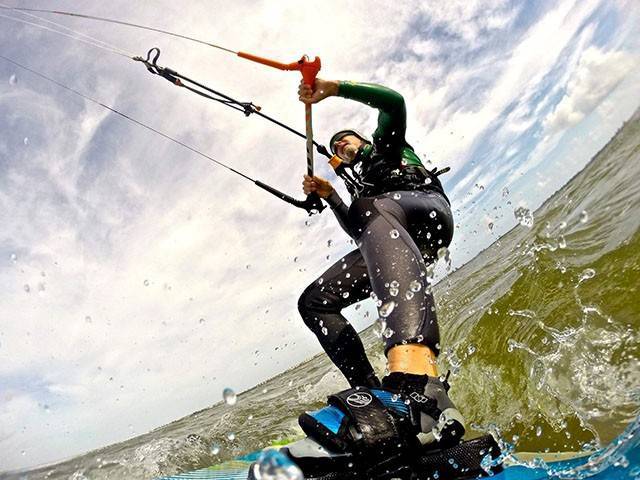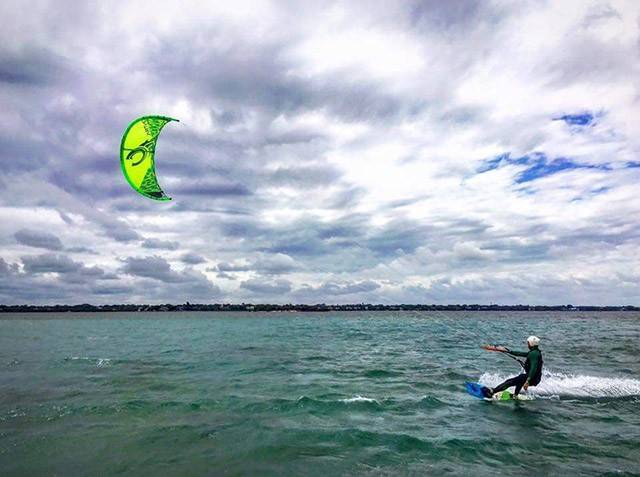
One of the most difficult tasks when learning to kiteboard is tacking upwind. This is the ability to ride upwind. Understanding the actual sailing part of the sport and how sailing works will aid you greatly in mastering the amazing sport of kiteboarding.
In previous articles, I have discussed the idea of “apparent wind”. This is wind you create with your own forward movement by moving the kite through the air. In order to go upwind, you must have created a decent amount of apparent wind. The apparent wind can be felt by a significant increase in pressure on the control bar, which is the bar in the kiteboarder’s hands that allows them to control the kite. As you sheet in (pull in) on the bar, the kite becomes more powerful. Naturally, it seems that more power would make it easier to go upwind. However, as the rider pulls in to create more power, they also create more drag and this pulls the kite more downwind, taking the kiter with it. What the rider really needs to do, is slowly sheet out (push out) on the bar. Although this creates less power, it releases some of the drag and allows the kite to better penetrate into the wind. It becomes a balance of creating enough power to ride and yet releasing enough tension to allow the kite to fly more efficiently. It is very counter intuitive and is the number one mistake people make when trying to ride upwind.
Another common mistake comes from improperly edging the kiteboard. Most riders edge too hard to go upwind and therefore “over edge”. Basically, they point the board too much into the wind. It is important to maintain a very fine balance between too much and not enough. The best way to find the correct angle of edging is for the rider to get up to speed and then edge more and more into the wind until they start slowing down. As the kiter slows down, they should reduce the “angle of attack,” turning a little bit more downwind until a comfortable balance between speed, power and upwind angle is achieved. The actual angle will vary greatly depending on wind speed and the equipment type being used.
When learning to master and harmonize sheeting, speed, and angle of attack to go upwind, I recommend the following. Pick a point 500 yards downwind of your starting position and see how many tacks you can achieve before you reach that point. Whenever you get to that downwind marker, walk back to your original starting position. Continue this process trying to get more and more tacks in each time. With each attempt, try to adjust your bar pressure and angle of attack along with body posture. You will get an idea of what works and what doesn’t because you will be able to see the number of tacks you are able to achieve with each attempt.
The ideal learning conditions for riding upwind is usually 15 to 20 knots, depending on rider size and available equipment. Less wind requires significantly more finesse. Remember that nothing can replace hands-on instruction from a professional instructor and learning to kiteboard on your own is very dangerous. I hope you all find this article very helpful and are having a great start to your summer.

[easy-social-share]




